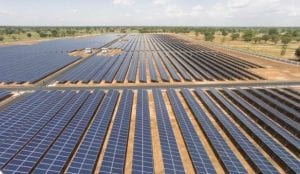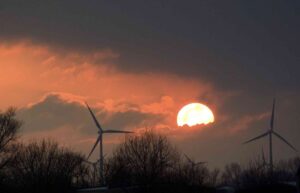Former prime minister Malcolm Turnbull has described the lack of planning and construction of pumped hydro energy storage in the world and Australia as “the ignored crisis within the energy crisis,” and says it will play a crucial role in the shift to 100% renewables.
Speaking at the Water Power Week Conference in the US on Wednesday, Turnbull said the single most important priority in energy markets around the world should be the planning and construction of Long Duration Electricity Storage (LDES).
He said that while the Australian Energy Market Operator had forecast the national grid would need at least another 45GW of long duration storage by 2050, Australia had very little in place and – in terms of pumped hydro – had hardly built any new capacity in more than 30 years.
“This is the ignored crisis within the energy crisis,” he told the conference. “The only way to make renewables reliable in the zero emission energy system we need is with [long duration] storage …And it will be pumped storage that will do the heavy lifting.”
Turnbull’s advocacy for pumped hydro energy storage is on the record.
In his time as prime minister he helped lock in the federal government backed development of the Snowy 2.0 project in New South Wales, with an eye-watering multi-billion-dollar price tag and storage of 175 hours, or 350,000MWh.
As RenewEconomy has reported, the gargantuan project which Turnbull described on Wednesday as “magnificent,” has been dogged by controversy – both on the cost and utility of the 2,000MW project, and on its environmental impact.
More recent concerns have focused on the costs of connecting it to the grid, which on their own have blown out to $3.3 billion, from an initial estimate of $1.3 billion.
A withering critique of the cost benefit analysis of the 330km Hume transmission link, published in September 2021 by leading energy experts, including head of the Victoria Energy Policy Centre Bruce Mountain, warns of a substantial increase in transmission fees to consumers and a $60 a year rise in their electricity bills.
But not all pumped hydro will be, or should be, on a Snowy scale. Another strong advocate of PHES, the Australian National University’s Andrew Blakers, argues that future renewable energy hubs like the Pilbara in Western Australia have potential for very large-scale pumped hydro energy storage at relatively low cost.
He argues that off-river pumped hydro – which works by pumping water from a lower reservoir uphill to a higher reservoir on sunny and windy days and letting the water flow back downhill through the turbines to the lower reservoir at night – is a much better way to store energy overnight than the many planned big batteries.
Blakers said in an article on RenewEconomy in February that his team at ANU had searched the Pilbara for off-river pumped hydro storage opportunities and found seven large (50-150GWh) and 25 intermediate (5-15 GWh) greenfield sites with combined storage potential of about 500GWh.
In Australia, the decades long pumped hydro project drought was broken last year by developer Genex, when construction of its 250MW/2,000MWh Kidston project got under way at an old gold mine, albeit after several years of development work and battles through delays and uncertainty.
Another in the development pipeline is Walcha Energy proposed construction of more than 4GW of wind and solar and up to 10 gigawatt-hours of mixed energy storage, including a 300MW, 10-hour pumped hydro project at the Dungowan Dam in the NSW New England region.
Still, as Blakers has noted, it is the big batteries – such as the massive nine gigawatt-hour (9GWh) project Fortescue Metals Group has announced it will build with a 5.4 GW solar and wind project in the Pilbara – that are getting the bulk of the money and the attention.
So what can be done? According to Turnbull, one of the single greatest challenges for PHES is securing financing in a rapidly changing and – in Australia, at least – eternally uncertain energy transition.
It is also not very well politically supported, although Turnbull noted in his speech that the Australian state of NSW was an exception to that rule. Back in 2018, he points out, Water NSW started calling for expressions of interest to establish pumped hydro schemes adjacent to many dams it owns.
And the NSW Coalition government, as part of its Energy Roadmap, has opened up a new program that will offer $50 million in grants to help fund early studies into what it hopes will be a 3GW pipeline of “shovel ready” pumped hydro projects in the state.
On the whole, however, Turnbull told the US conference that pumped hydro storage was “a long way from getting the attention it needs at the political level.
“All too often people say ‘there are no suitable sites’ which – as Andrew Blaker’s ANU study of over 600,000 off-river sites shows – is manifestly untrue, or ‘it’s too expensive’ which begs the question of how you otherwise keep the lights on overnight without burning fossil fuels?”
“We have to stop burning coal and gas. We have the renewables to generate unlimited power, but it is intermittent. To make it reliable we need long duration storage and the best solution to that end is pumped storage.
“We need to get cracking and build it. Not just because it takes more time than building a solar farm but because we need to show it can be done repeatedly and at reasonable cost. Seeing will be believing.
“Without pumped storage, the energy transition is in danger of stalling just as it should be accelerating. The energy transition, the achievement of net zero, containing global warming to 2 degrees all depends on it, depends, in other words, on us.”










